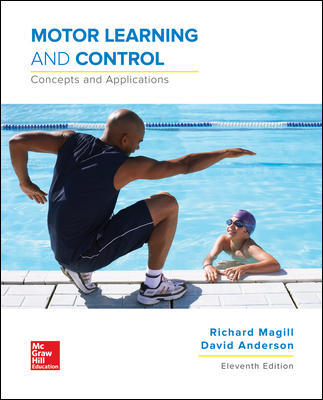Motor Learning and Control Concepts and Applications 11Th Edition By Richard – Test Bank
Chapter 05 Motor Control Theories Answer Key
Multiple Choice Questions
|
1. |
The world-renowned physicist Stephen Hawking stated that which of the following should describe a large class of observations and accurately predict the results of future observations? A. Hypothesis B. Model C. Schema D. Theory |
|
Accessibility: Keyboard Navigation |
|
2. |
An understanding of motor control theory enables a practitioner to: A. Identify performance problems B. Develop interventions to overcome performance problems C. Predict the effectiveness of intervention strategies D. All of these |
|
Accessibility: Keyboard Navigation |
|
3. |
Coordination should be considered in terms of body and limb movement patterns in relation to: A. How the body and limb movement patterns can self-organize B. Patterns of environmental objects and events C. The characteristics of open- and closed-loop control systems D. The invariant features of a generalized motor program |
|
Accessibility: Keyboard Navigation |
|
4. |
The degrees of freedom problem was first identified by: A. Nicolai Bernstein B. Franklin Henry C. Stephen Keele D. Richard Schmidt |
|
Accessibility: Keyboard Navigation |
|
5. |
The degrees of freedom problem, which the nervous system must solve so that a person can achieve the action goal of a complex motor skill, involves determining: A. If an open-loop or closed-loop system is needed to control the action B. The amount of force needed to achieve an action goal C. The organization of muscles, limbs, and joints needed to achieve an action goal D. Which environmental cues are relevant for performing the skill |
|
Accessibility: Keyboard Navigation |
|
6. |
An important difference between the open- and closed-loop control systems is that the: A. Closed-loop system involves feedback; the open-loop system does not B. Open-loop system involves feedback; the closed-loop system does not C. Closed-loop system involves movement instructions; the open-loop system does not D. Open-loop system involves movement instructions; the closed-loop system does not |
|
Accessibility: Keyboard Navigation |
|
7. |
The action of throwing a dart at a dartboard is an example of a motor skill that is controlled by: A. A closed-loop control system B. An open-loop control system C. Both open-loop and closed-loop control systems D. Feedback |
|
Accessibility: Keyboard Navigation |
|
8. |
Which of the following skills would be under closed-loop control: A. Throwing a dart at a dart board B. Bowling a bowling ball C. Shooting a bullet at a tin can D. Driving a car |
|
Accessibility: Keyboard Navigation |
|
9. |
Which of the following types of motor control theories emphasizes the role of a memory representation in the control of coordinated action? A. Chaos theories B. Dynamical systems theories C. Motor program theories D. All of these |
|
Accessibility: Keyboard Navigation |
|
10. |
According to Schmidt’s motor program-based theory of motor control, the mechanism primarily responsible for the control of coordinated movement controls: A. A class of actions B. All actions involving limbs on the same side C. All actions involving the same limb D. Specific movements |
|
Accessibility: Keyboard Navigation |
|
11. |
According to Schmidt’s motor program-based theory of motor control, which of the following would be controlled by the same generalized motor program (GMP)? A. Hitting a golf ball and hitting a pitched baseball B. Throwing a ball overhand and underhand C. Using either hand to reach for and grasp an object D. Walking and running |
|
Accessibility: Keyboard Navigation |
|
12. |
In Shapiro and others’ experiment on relative timing patterns in walking and running, a motor program-based theory of motor control would conclude that: A. A motor program type of control mechanism does not control walking or running B. Both walking and running are controlled by the same GMP C. Each of the various speeds of walking and running is controlled by its own GMP D. One GMP controls walking and a different GMP controls running |














Reviews
There are no reviews yet.